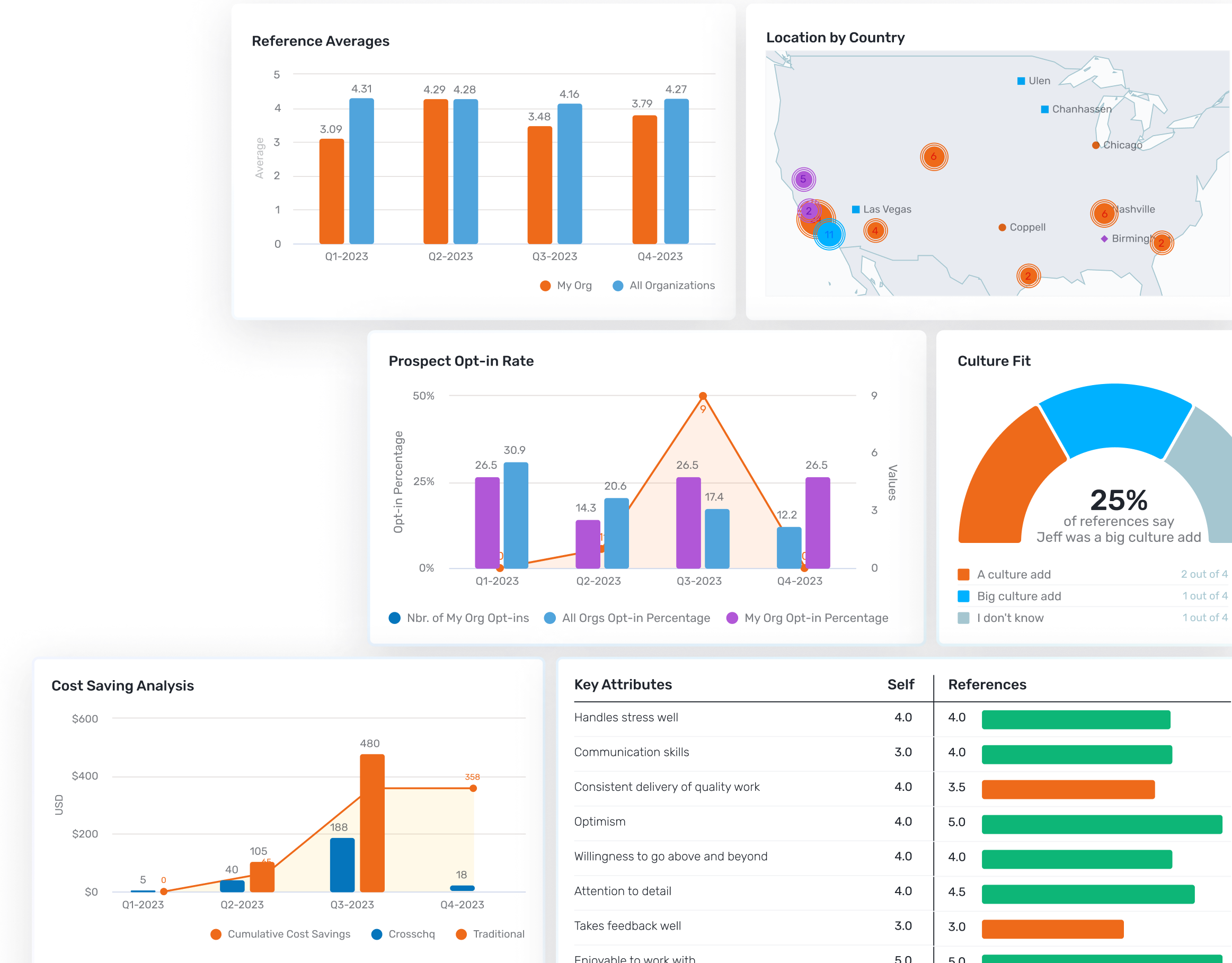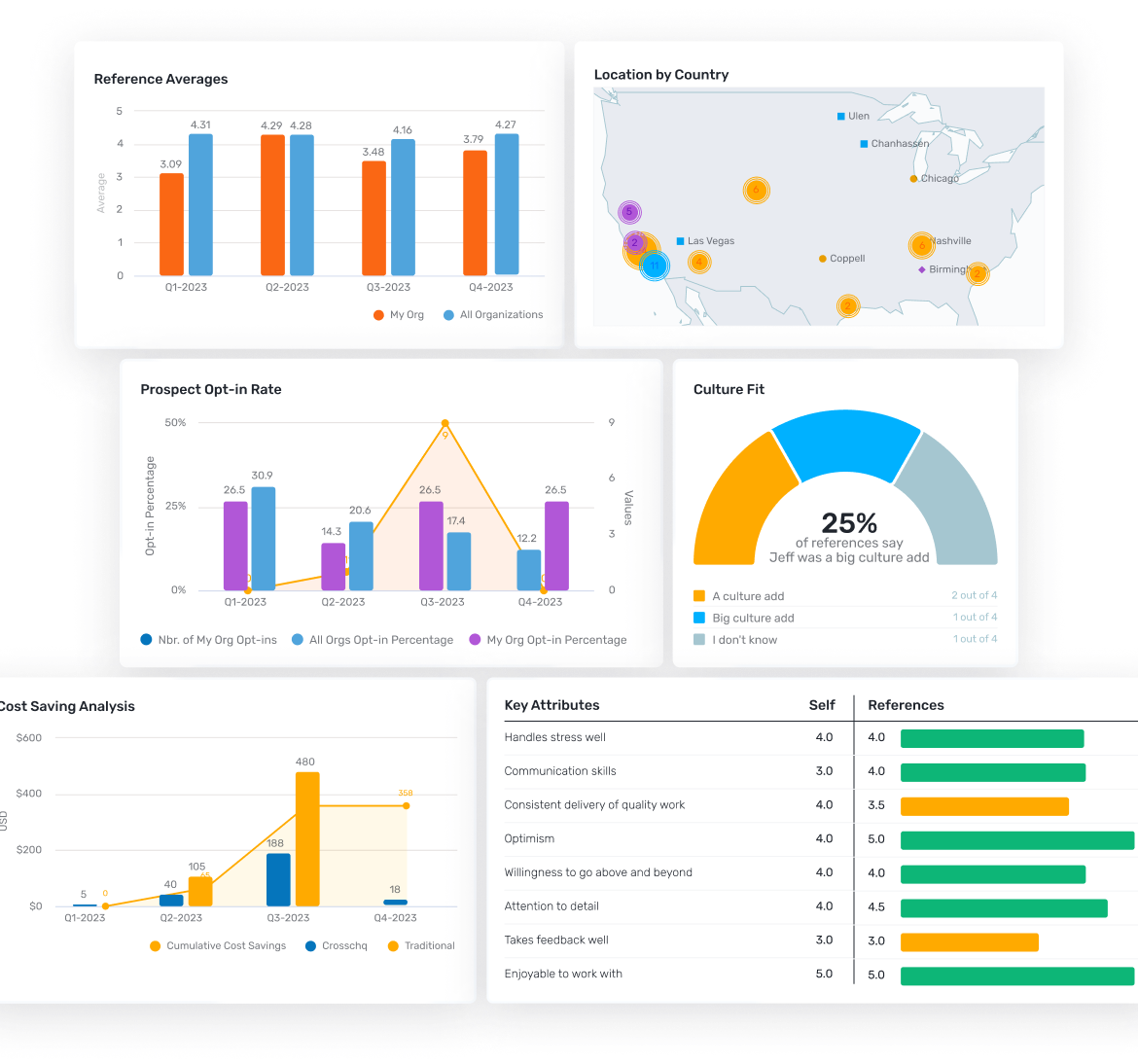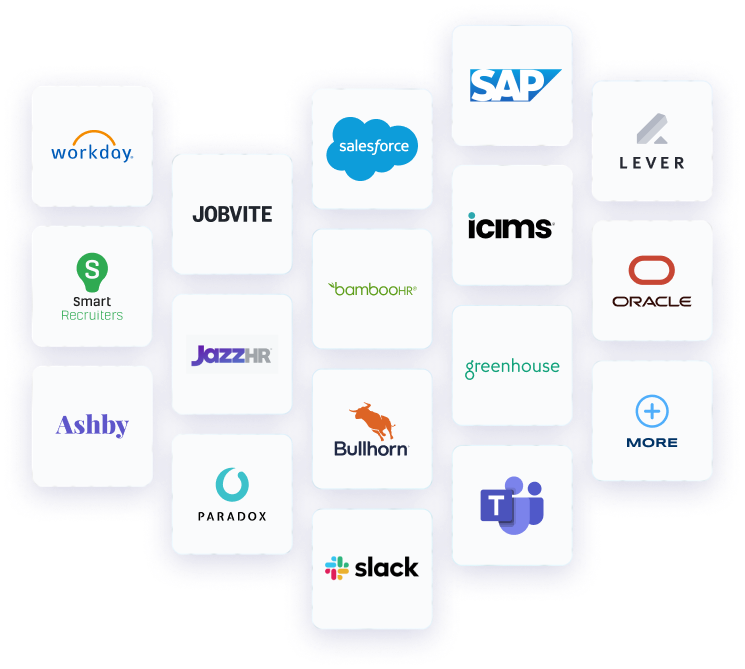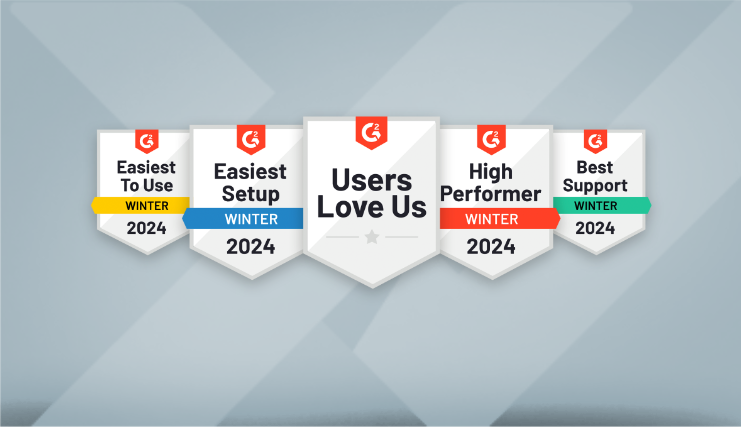

Crosschq Blog
Talent Acquisition Analytics: A Complete Guide

As recruitment strategies become more data driven (and rightly so) talent acquisition analytics are becoming a necessity for serious recruitment teams. There has never been more data available about prospective hires than there is now, and knowing how to interpret and apply insights can transform your talent acquisition pipeline.
A LinkedIn study found that at least 50% of hiring professionals use big data, which has helped them increase employee retention by 56%. How did they utilize that data? By developing strategies with the help of their talent acquisition platforms.
Below we’ll cover everything you need to know about talent acquisition analytics and how to integrate a talent acquisition strategy into your hiring practices.
What is talent acquisition analytics?
Talent acquisition analytics refers to a process of crunching recruitment and employee data to improve your hiring practices, performance, and other important business metrics. Talent analytics is initiated through an advanced talent analytics platform, which can help you gain insights on key metrics (quality of hire, time to hire, retention rate), predictions, and pipeline efficacy.
How do you measure success in talent acquisition analytics?
You can measure success in talent acquisition analytics by establishing benchmarks, tracking key acquisition metrics, and setting actionable goals that serve as your yardstick for success. Talent acquisition analytics should enable you to fill skills gaps, land better quality hires, and reach your strategic goals.
For example, if your goal is to improve your quality of hire or boost performance, then a talent acquisition platform can track things like:
Retention rates
Hiring is only the first step. Identifying top talent and getting them to come work for you isn’t much use if they only stick around for a few weeks or months. Tracking retention using talent acquisition analytics can help you spot patterns in who is joining the quick-quit list, and help you head off these events as well as hire more carefully in the future. Your retention rate should be over 90%, so knowing how to increase retention rates is critical if your turnover is 10% or more.
Reporting on the quality of new hires (complete with visuals)
Quality of Hire is the most important metric when it comes to talent acquisition analytics. Other metrics pale when Quality of Hire is undiscerned. Tracking QoH is critical to understanding the success of your hiring strategies - without it, your retention rates, productivity and revenues will falter. When you focus on Quality of Hire, you increase your chances over organizational success.
Download our Quality of Hire Cheat Sheet
Which hiring channels are delivering the most success
Are you wasting money on hiring channels that just aren’t delivering top talent? It’s easy to see where most leads are coming from, but it’s not about quantity. You need to know where your BEST candidates are coming from, a question that can only be answered using talent acquisition analytics to track source of hire. Once you know where the best candidates for your company tend to look for job postings, you can concentrate on supporting those channels and trim the fat from your recruitment budget.
Which of your interview panels is most accurate at predicting top talent
Interviewing is the sticking point for many people involved in the hiring process, from recruiters and hiring managers to the candidates themselves. If one of your interview panels is doing things right when it comes to recognizing high quality talent, it’s time to figure out what they are doing differently and get other teams to emulate their process. Talent acquisition analytics can help you find those top performers in your interview squad.
Download our Productive Interview Cheat Sheet
Embracing talent acquisition analytics to measure recruiting efficiency
If you’re not sure where to start, the following talent acquisition analytics metrics can give you a good idea of your overall hiring efficiency.
Retention rates
Often confused with turnover, retention looks at how long your employees stay employed within a specified period of time. You can calculate retention with the following formula:
Retention = number of employees who remain employed during a period of time divided by # of employees at the beginning of the measuring period multiplied by 100.
Retention is helpful in showing how stable your workforce is during specified time periods. It can lead you to a number of talent management processes like onboarding, employee satisfaction, and quality of hire, among others.
Cost per hire
Your cost per hire is a good measurement of your efficiency as a recruiter. You can determine your cost per hire through a simple formula: external cost plus internal cost divided by your total number of hires within a time period.
Hiring analytics should help you hire better candidates, but they should also allow you to hire smarter. They can highlight the best talent pools for the kind of candidates you want, help you avoid costly hires, and allow you to find candidates more quickly.
Quality of Hire
As a hiring team, it’s important to measure pre-hire metrics to determine the efficacy of your match-making capabilities. Quality of hire is the number one pre-hire metric to do this, and you can measure quality of hire in a variety of ways. Turnover rates and new-hire performance metrics are the two most common ways to measure quality of hire.
With turnover, you need more information because a high turnover rate might be an indication of poor management or an ineffective onboarding process. But new-hire performance measurements, like meeting sales quotas or maintaining customer satisfaction ratings, are fairly straightforward.
Talent acquisition analytics tools to measure candidate experience
You are more likely to land quality hires who have a positive candidate experience through improved hiring strategies if you use talent acquisition analytics within your hiring system. You can measure your candidates’ experience with the following metrics and strategies.
Candidate surveys
You can create your own survey questions using the Crosschq platform to track candidate NPS and find out how candidates are experiencing your hiring process. If you’re concerned about candidates not wanting to respond after a poor experience, you can also keep track of what people say about you by tracking reviews of your company and following mentions on social media or hiring platforms like LinkedIn. Since 50% of workers say they have turned down a job offer after a bad candidate experience, conducting research and surveys to make sure you aren't falling short is critical.
Application abandonment rates
Your application abandonment rate will tell you how many candidates started filling out their applications but never actually go through with applying. You can measure your abandonment rate with the following formula:
Application abandonment rate = number of candidates that did not complete their application divided by the number of candidates that began filling out an application multiplied by 100.
If you have a high abandonment rate, you may want to look at how your application is structured and why potential hires aren’t getting past the point of the application. Be aware that across the board, 92% of online job seekers abandon applications without submitting them, so there is lots of room for improvement.
Visitor conversion rate
At what rate do candidates who visit your career page actually apply to your job?
You can determine your visitor conversion rate with the following formula: total number of job page visitors divided by the number of visitors who applied to your job equals your visitor conversion rate. So if 80 apply to a job posting with 1,000 visitors, you have a visitor conversion rate of 8%.
A low visitor conversion rate can be an indication that something about your job description, job board page, or website isn’t communicating the job clearly or attractively enough.
Final thoughts on talent acquisition analytics
One of the best ways to improve your hiring capabilities is through a transparent and collaborative talent acquisition analytics solution, like Crosschq. Crosschq helps you get visibility into your most crucial hiring metrics, identify inefficiencies in your interview process, and optimize your talent resources with real-time insights into key hiring metrics.
Crosschq’s TalentWall integration will allow you to make better hires, more quickly, and with more transparency. Get a bird’s-eye view of how well your recruiters are performing by department, office, user, and date, and start tracking candidates through the entire journey with a focus on Quality of Hire.
Gather data that really matters with Crosschq 360 digital references. Eliminate hours spent on the phone trying to wrangle useless info from previous employers, and instead get data you can use for apples to apples comparisons between candidates from their former peers and mentors.
Leverage candidate experience surveys to find problem spots or blocks in your hiring funnel. Match that with hiring team experience insights that let your recruiters, hiring managers, and interviewers weigh in on where they feel the choke points are in the recruitment pipeline.
On the analytics side, our ATS analytics effortlessly works to sync and filter all of your recruitment data, surfacing the intel that matters most and creating a single source of truth. Finally, Quality of Hire analytics keep you improving your hiring strategies until every hire you make is exactly the right person for the job, every time.
Download our Cheat Sheet for Recruiters
Try our demo today to learn more about how TalentWall and other Crosschq features can transform your talent acquisition analytics strategy.
Take the Guesswork
Out of Hiring
Schedule a demo now



%20-200x43.png)





